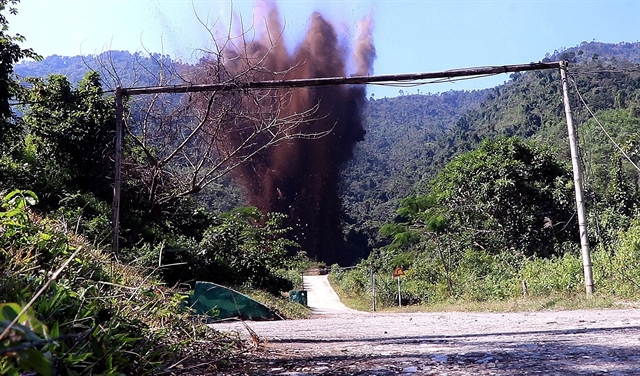 Life & Style
Life & Style

Made entirely of wood, the houses are where the locals keep the bodies of their loved ones as well as their personal effects and working tools. It is in their belief that in the after life the dead has need for such items just as they did when they were alive. Most distinguishable features are various statutes carved from fresh wood, which local install as parts of a protective fence around the dead’s final resting places.
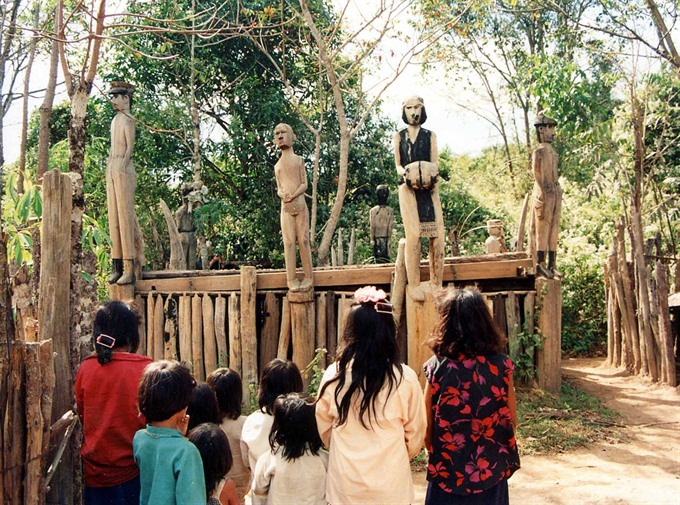 |
| Local treasure: Visitors look at a typical charnel house, decorated with numerous wooden statutes, which are installed as part of a fence to protect the structure. |
Charnel house building for the dead, one of the most important ceremonies in a person’s life for many ethnic groups in Việt Nam’s central highland region, takes place around October after harvest.
The ceremony, known as Po-thi by several ethnic groups including the Ê Đê, Ba Na and Jarai people, starts with the dismantling of the old charnel house to replace it with a larger and permanent structure.
Made of wood, the houses are where locals keep the bodies of their loved ones as well as their personal effects and working tools. It is their belief that in the afterlife the dead need these items just as they did when they were alive.
The most notable features are various statutes carved from fresh wood, which locals install as parts of a protective fence around the final resting places.
The statutes often depict the everyday lives of local inhabitants. Many show the bond between family members such as children and their grand parents, husband and wife or to pray for a bountiful harvest. Upon completion, they are left outside to brace for the rain and the sun as the charnel houses are placed deep in the forest.
In recent years, the region’s ethnic groups have been struggling to keep the art of making these wooden statutes alive with youngsters showing little interest in the tradition.
Measures village elders and local authorities have employed to stop this decline include holding statute carving contests and charnel house tours for visitors. — VNS
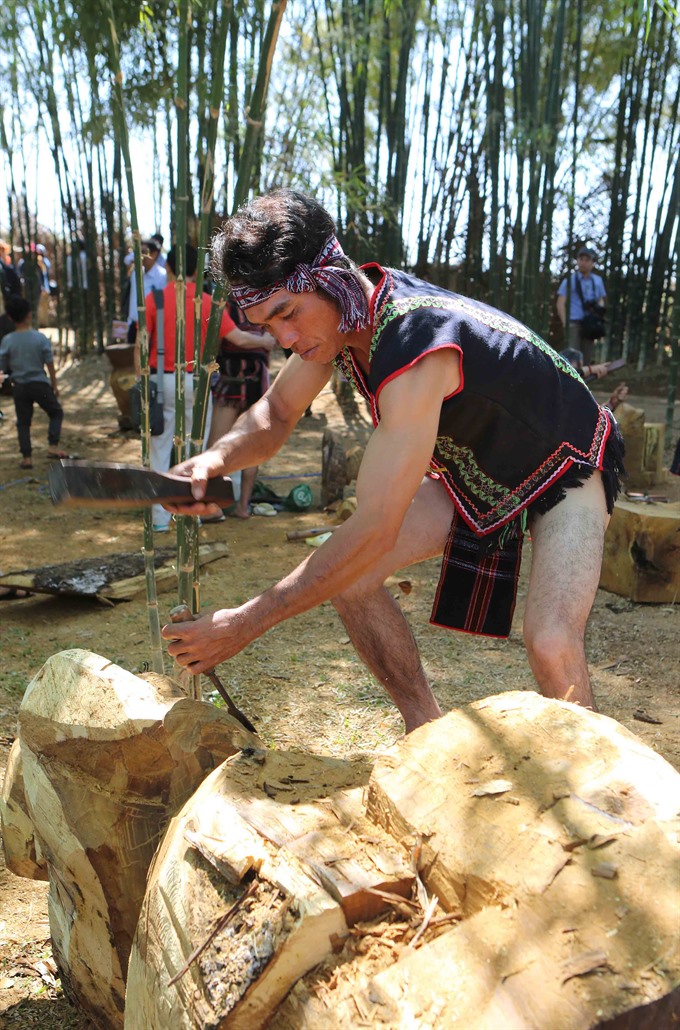 |
| Soulful: A sculptor works on a piece of fresh wood. Local ethnic groups believe that the wood already possesses a soul, a sculptor’s job is merely to give them a form. |
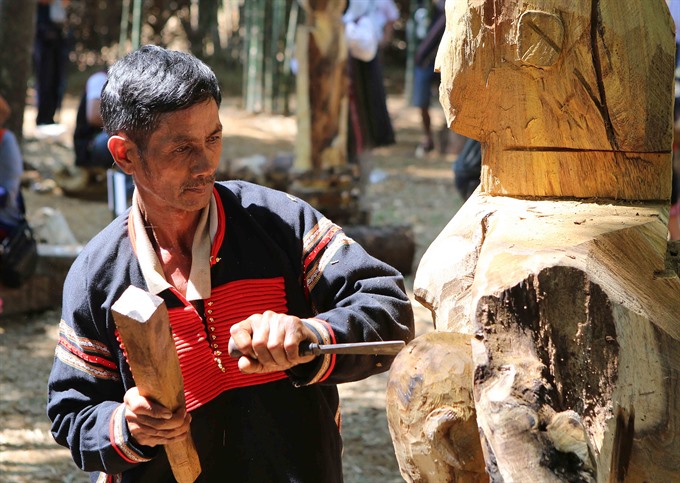 |
| Concentrate: A sculptor works on a piece of fresh wood. A great deal of attention is required to express human emotion as only the most basic of tools are used in the making of the statutes. — VNA/VNS Photos Dương Giang |
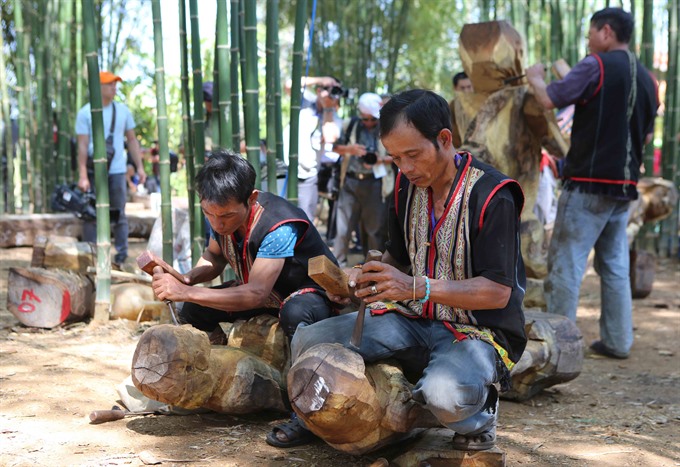 |
| On show: Sculptors show their skill during a statute making contest held by several of the region’s ethnic groups. |
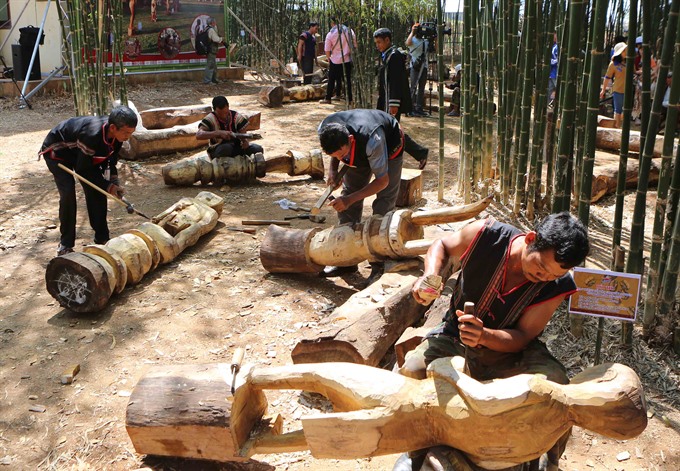 |
| Almost done: Sculptors put the finishing touch to their statutes during a statute making contest. |


